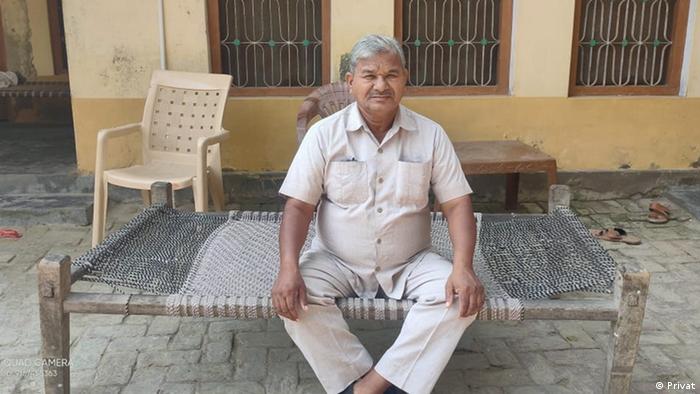Lal Bihari is probably India’s most famous living dead, one of many people killed off in official records so that relatives can claim their possessions for themselves.
Killing off somebody on paper is apparently not that hard to do in India. All you need is some bribe money and local officials willing to do some dirty work in exchange for that money. Victims are usually people who have been away from their birthplace for a long time, and the culprits are greedy relatives trying to claim their land or their family homes. But once you’re dead in official records, proving that you’re actually alive is a much more difficult endeavor, especially when the people you are trying to convince are the very same who were paid to kill you off in the first place.
Lal Bihari’s story is probably the most famous example of a “dead man’s” struggle in India. His woes began in 1976, when he returned to his birthplace, the village of Khalilabad, in Uttar Pradesh, for residence, income and caste certificates, needed to secure a loan for his heirloom business. When the clerk first looked up at him and told him that Lal Bihari was dead, he smiled, but the clerk didn’t smile back…

“Lal Bihari died last year,” the lekhpal told him. “I don’t know who you are.”
“But I am here before you,” a puzzled Bihari replied. “You know me. I have met you before.”
The clerk didn’t care. He showed the ‘dead man’ that the official record showed that he had died on July 30, 1976, a year prior, and that his land had gone to his cousin. Even though he was shocked by the news, Lal Bihari was confident that he could make things right soon. After all, he was living proof that he hadn’t died. He had no idea that he would spend the next 18 years fighting to be resurrected.
Bihari began his struggle by contacting a lawyer who laughed at him, saying “A dead man has come to me.” He then tried to file complaints with the local authorities, the very same people who had declared him dead to begin with. Soon, locals started mocking him, calling him ‘mritak’ (dead man) and a ghost. He felt humiliated, but there was nothing he could do.
In 1980, a politician by the name of Shyam Lal Kanojia gave Bihari a piece of advice that would change his life. Instead of being ashamed of his status as a mritak, he should instead embrace it and use it to shame those who had killed him off.
“Your case is going nowhere,” Kanojia said. “You are a mritak. Why not openly call yourself one to shame those who did this to you?”
From that day forward, Lal Bihari started making a spectacle of himself, in an attempt to highlight his problem, and that’s how he discovered that he was one of many other living dead in India, many of whom needed help and guidance.
Among the many stunts Bihari pulled in his 18 years as a mritak, Lal Bihari tried running in a regional election, to prove that he was alive, claimed widow’s assistance for his wife, because he was officially dead, and even kidnapped his young cousin, whose parents Bihari believed had bribed officials to declare him dead, and he even founded a non-profit to help other living dead. Newspapers started writing about him, and his story spread around India.
It wasn’t until 1994 that Lal Bihari was resurrected in local official records, and only after the arrival of a new lekhpal. But that wasn’t the end of his story. After going through this 18-year ordeal, the Indian man dedicated much of his time to helping other living dead, through his organization, Mritak Sangh. He has since helped hundreds of people, launching investigations against dozens of corrupt officials. His unbelievable story was brought to the silver screen, in the movie Kaagaz.
Although the Indian government describes the issue as “not institutional or widespread,” Lal Bihari believes that the number of living dead in India is somewhere in the tens of thousands. Fueled by greed, the land-grab method of declaring relatives dead is still very popular in the Asian country and even pits children against parents.
“My own son had killed me off,” Panchu, a 75-year-old in Adampur village told Open the Magazine. “If it had not been for Lal Bihari, I would still be dead.”












